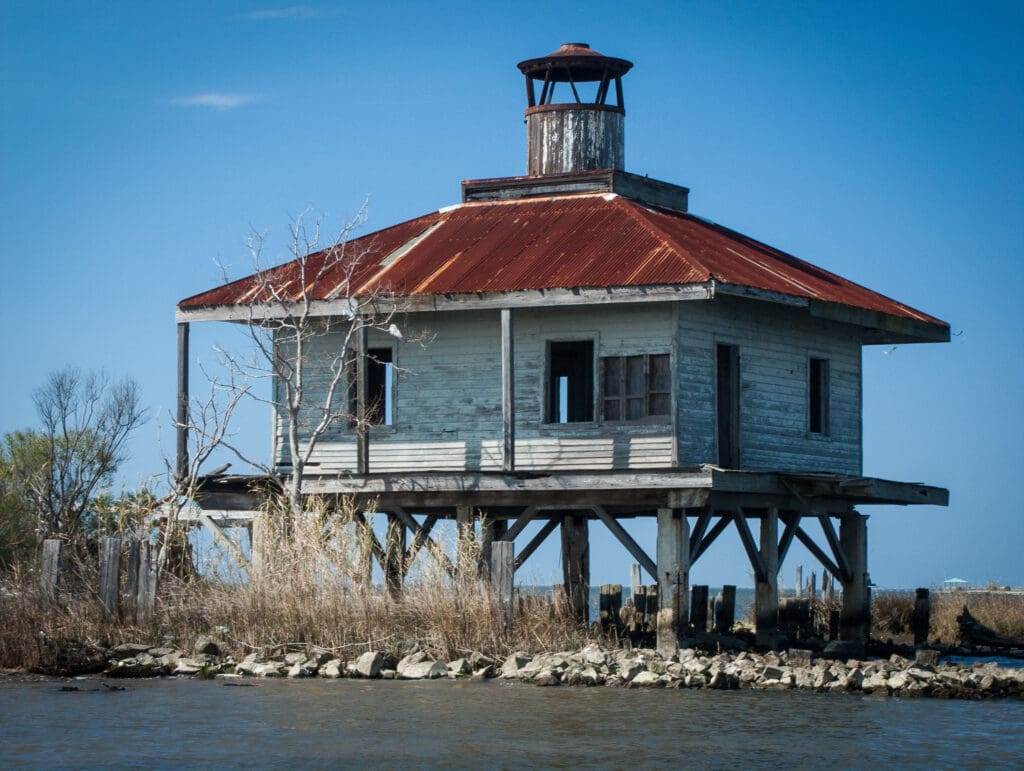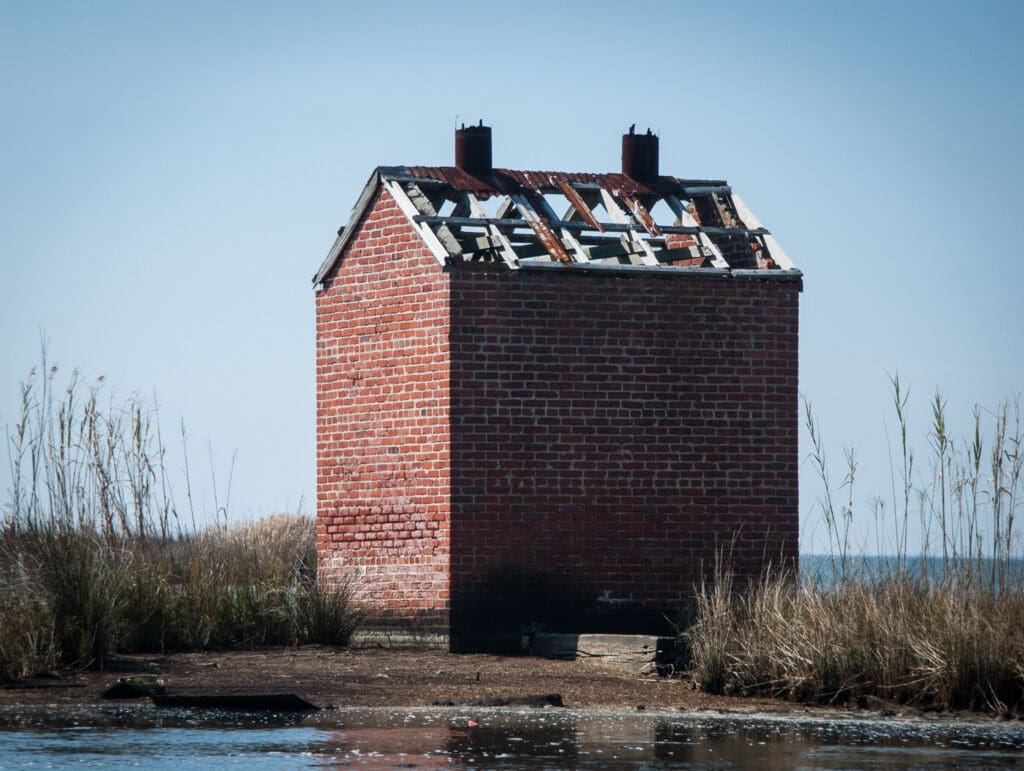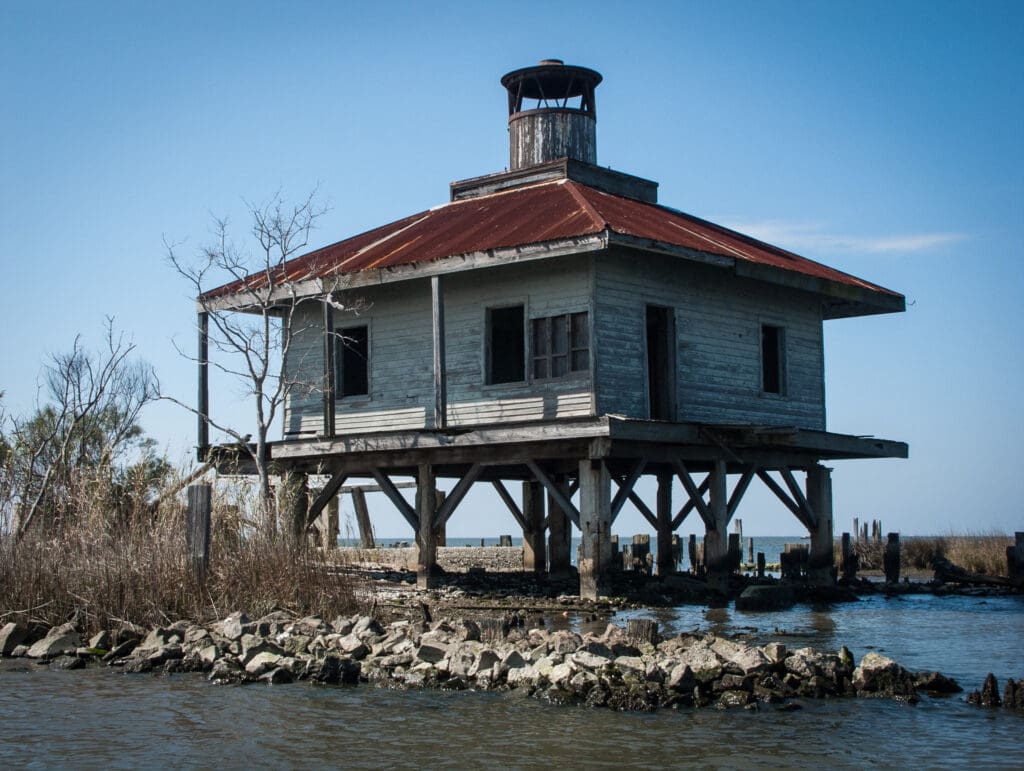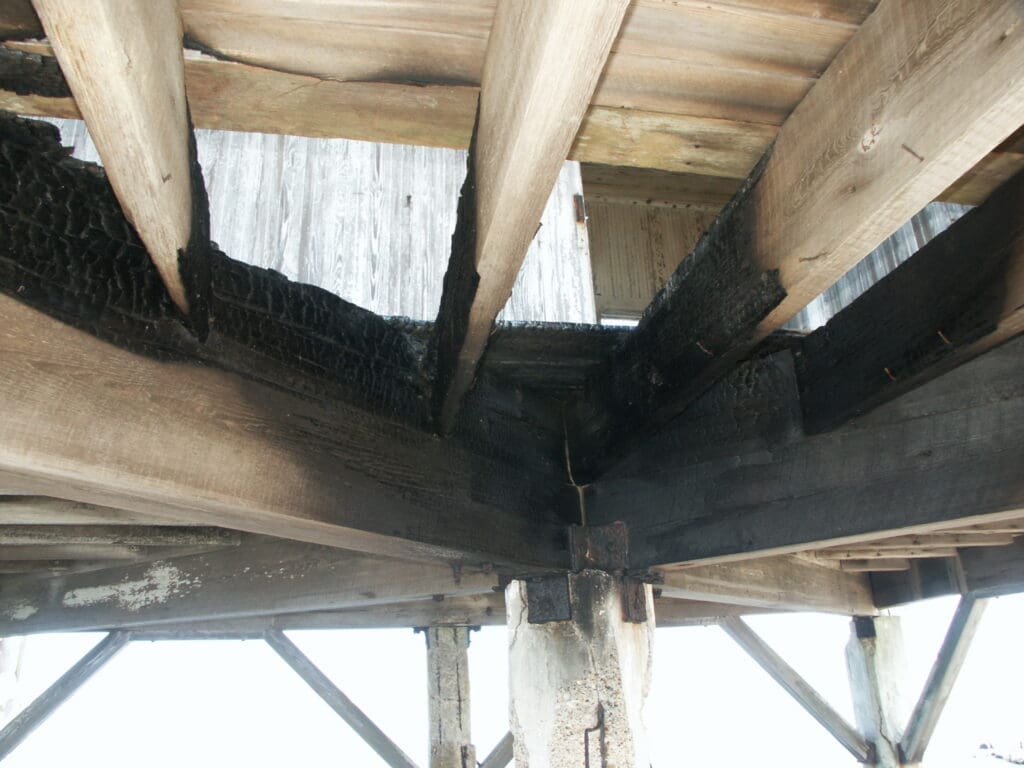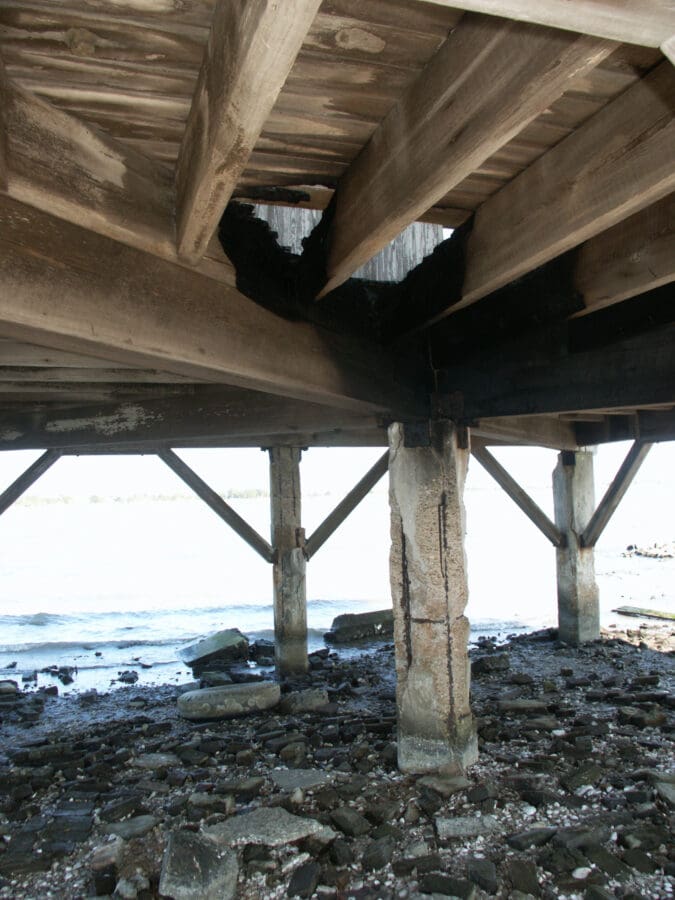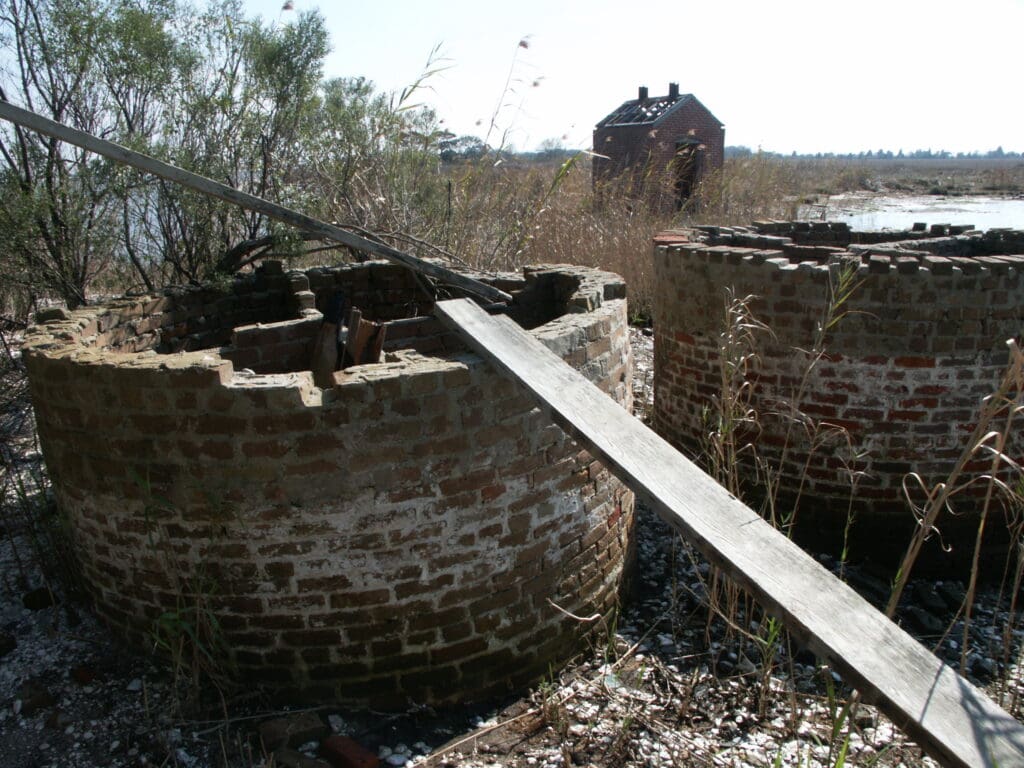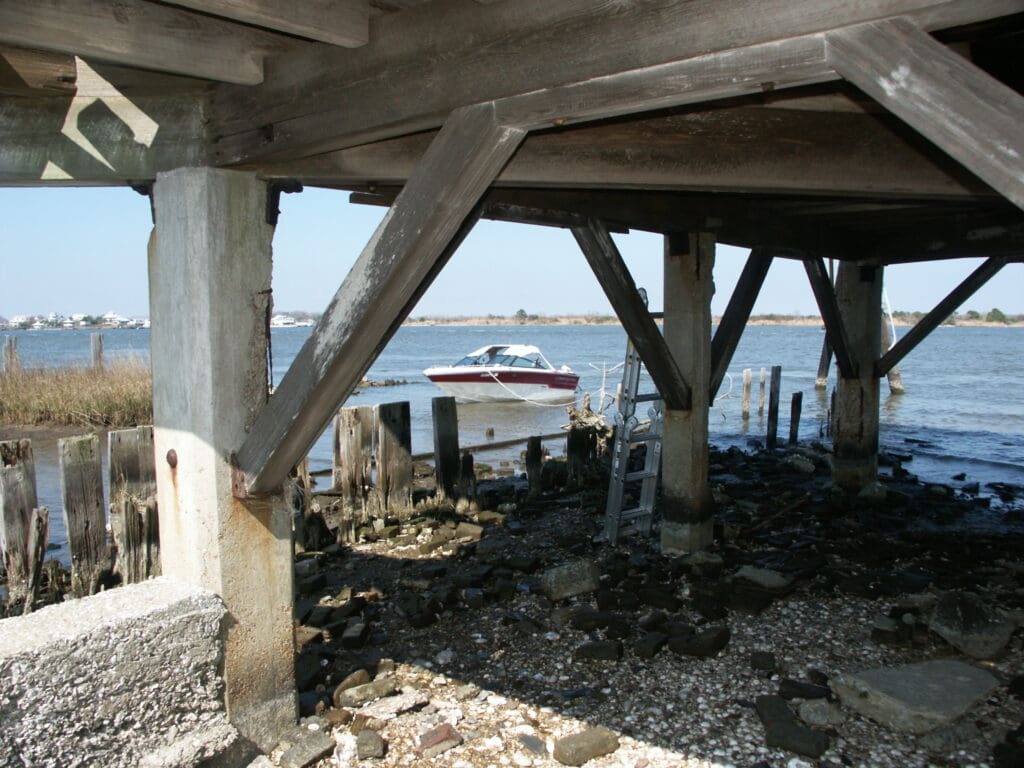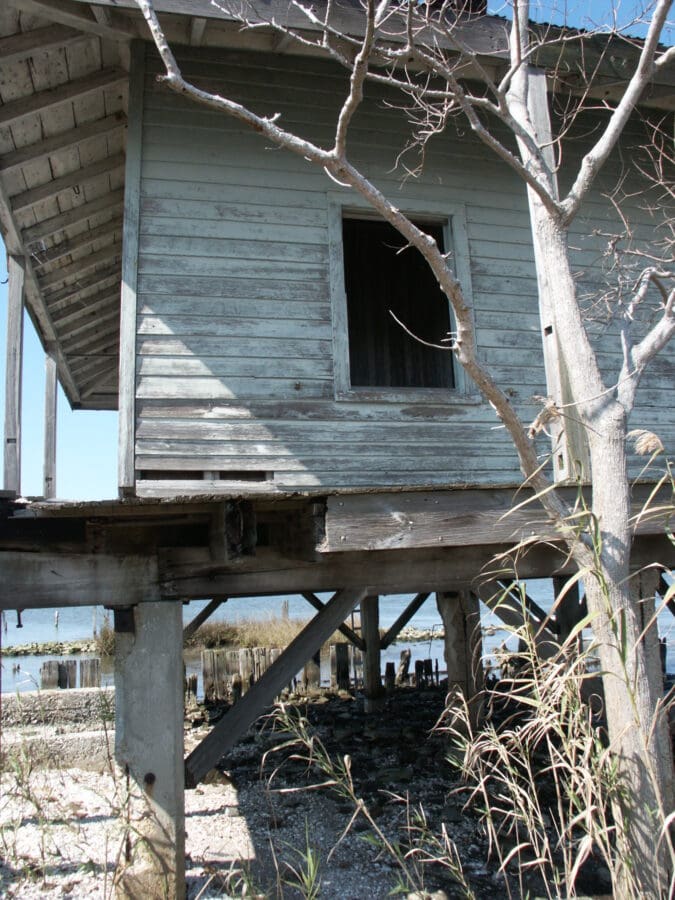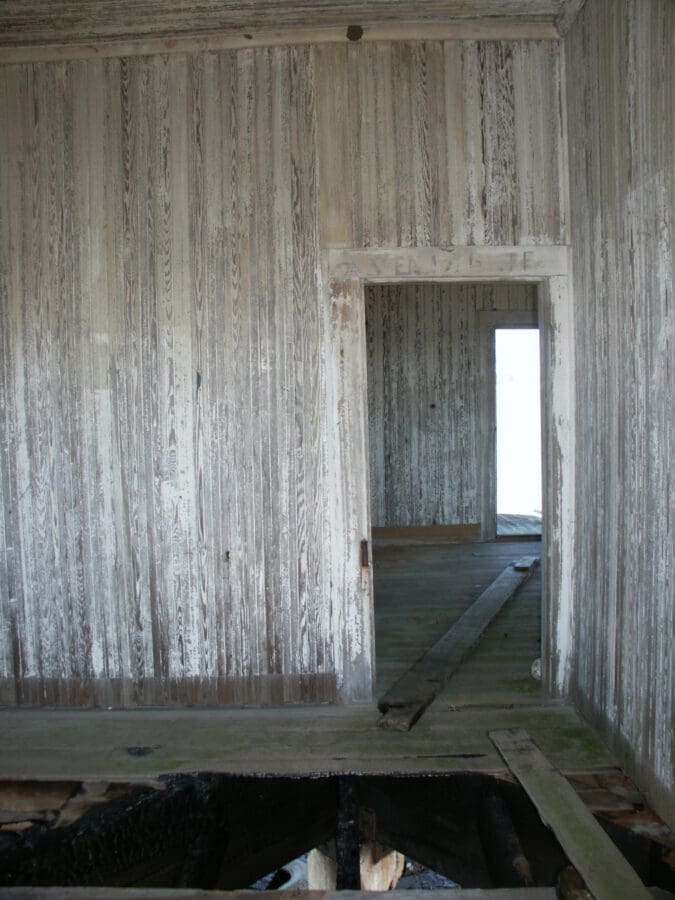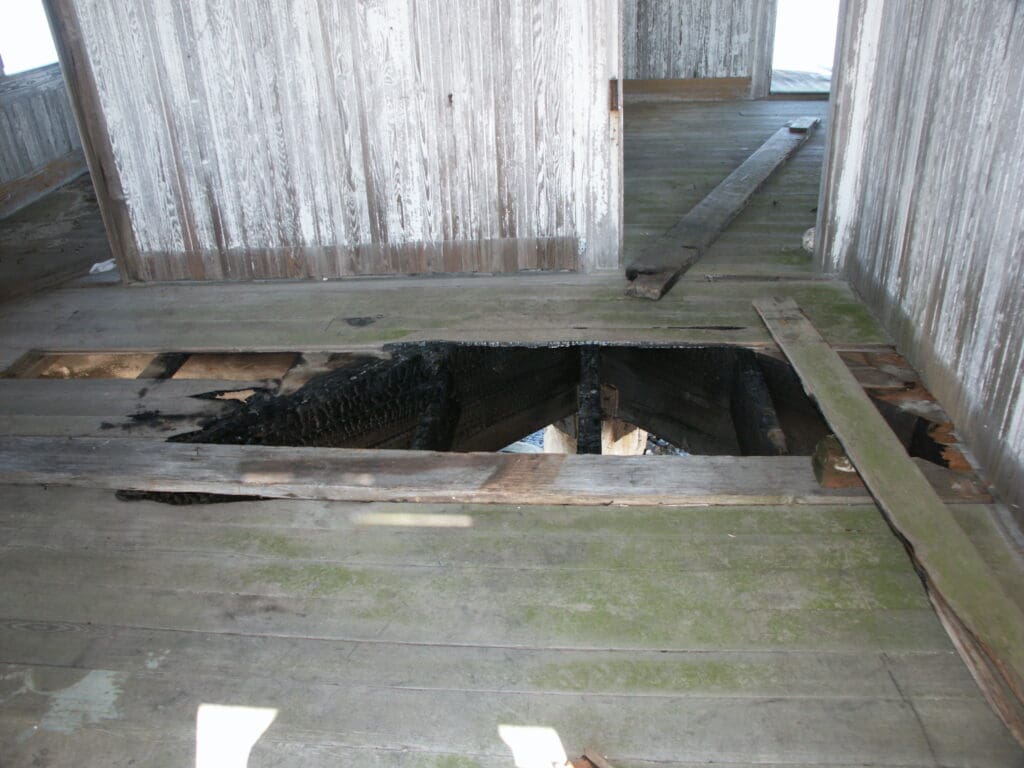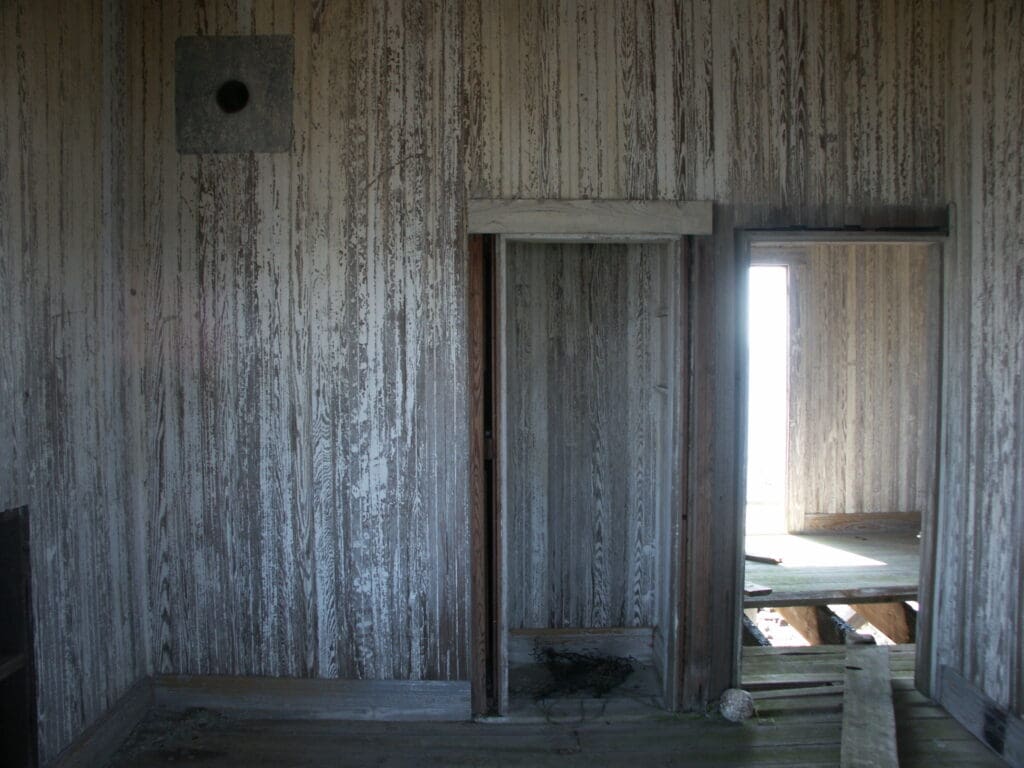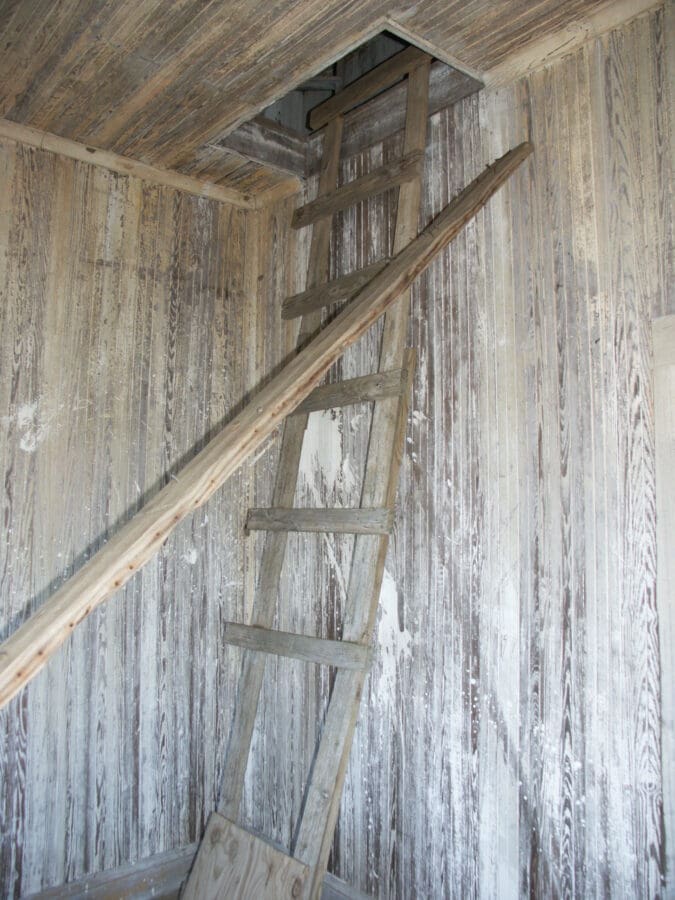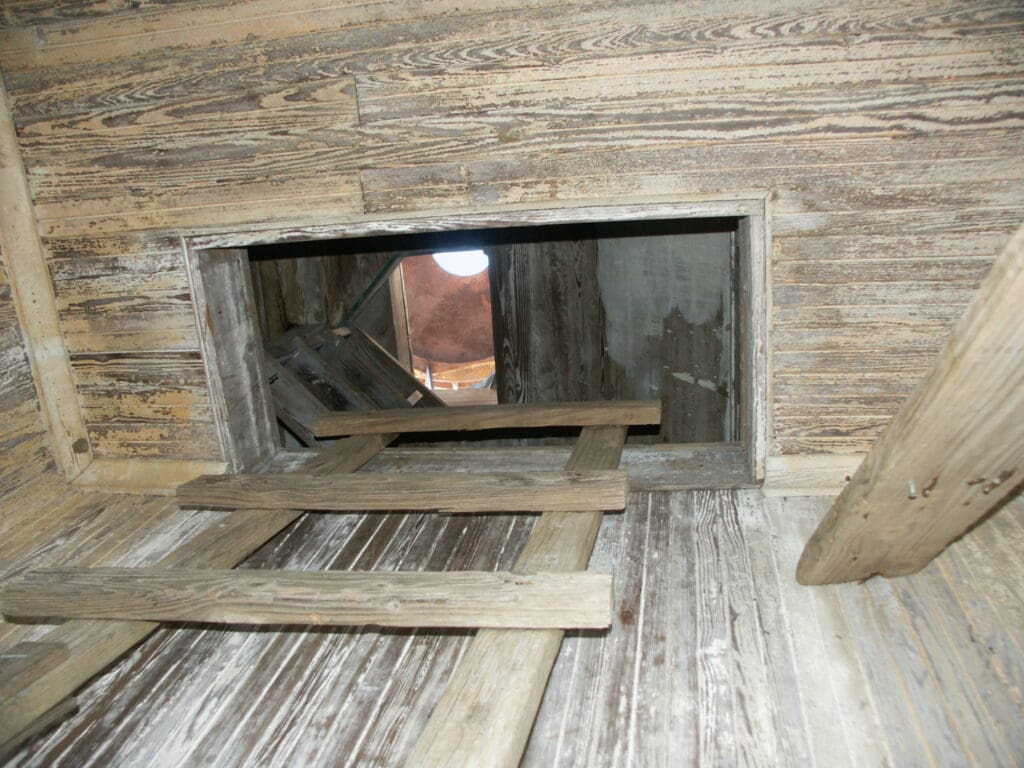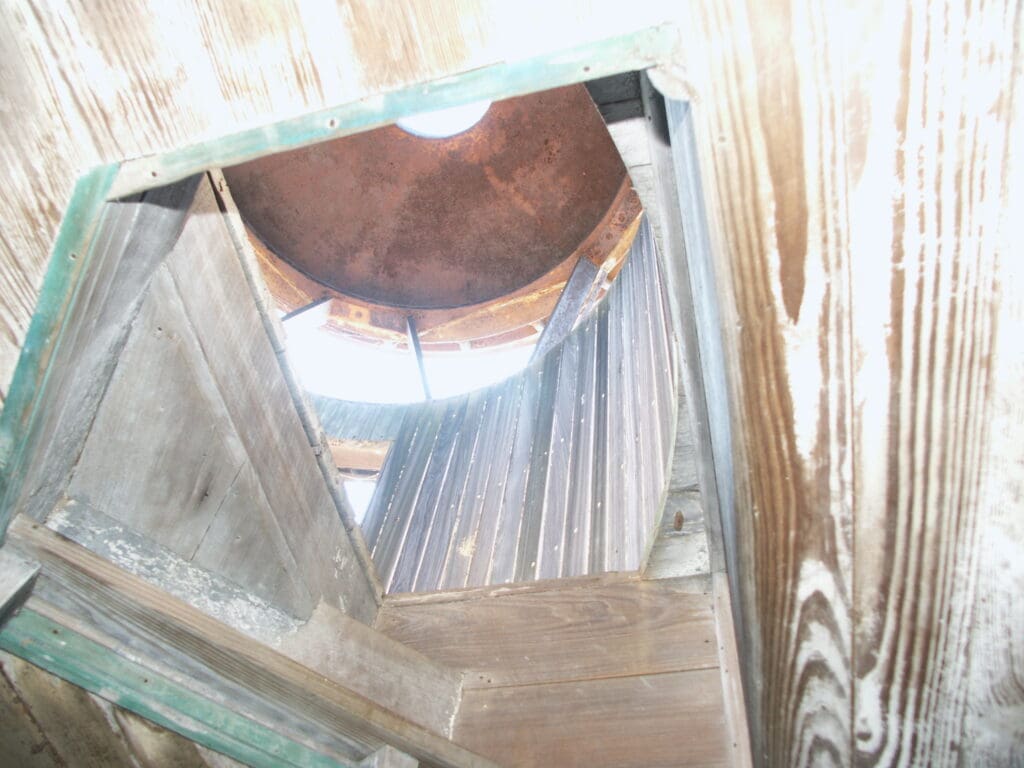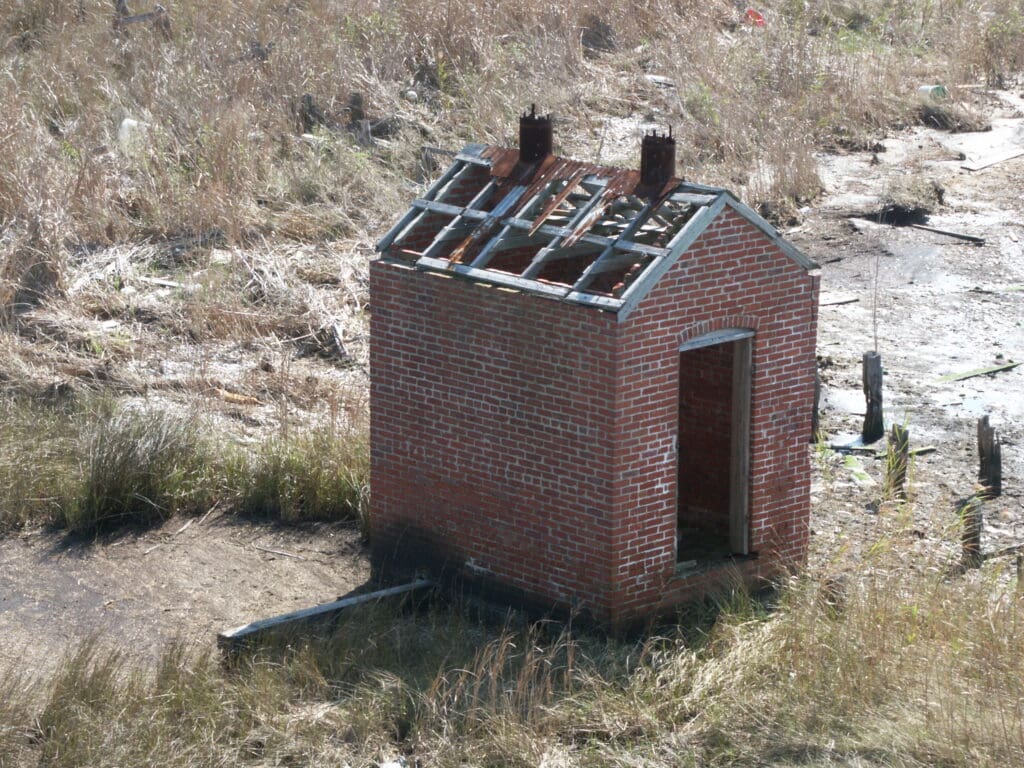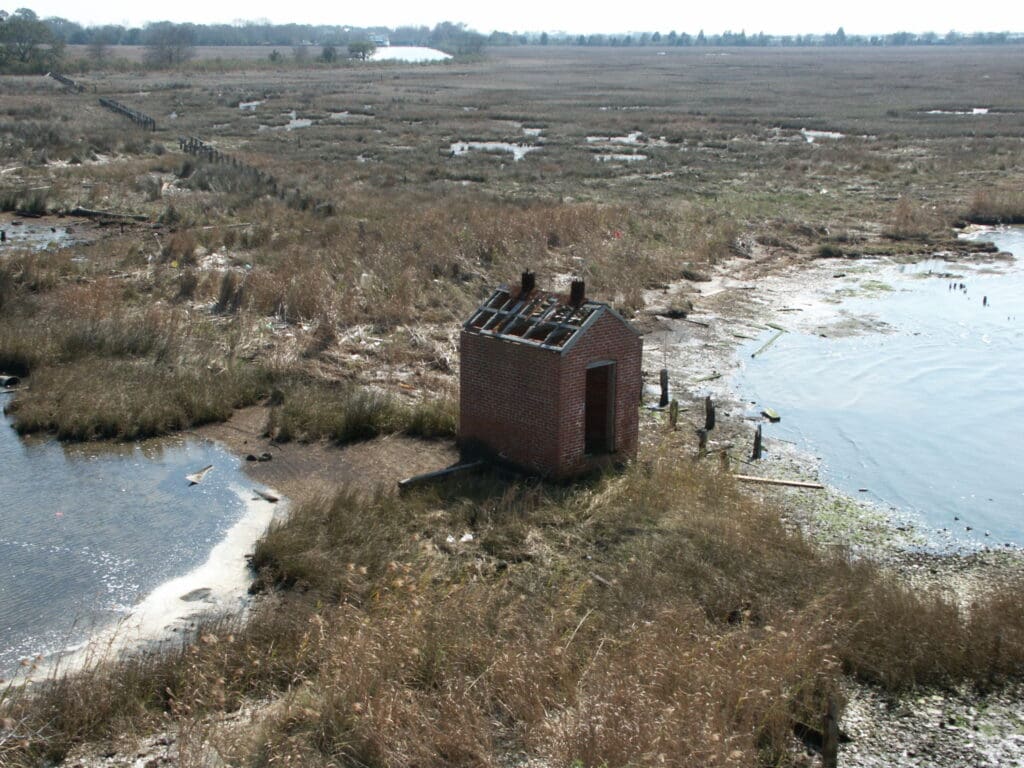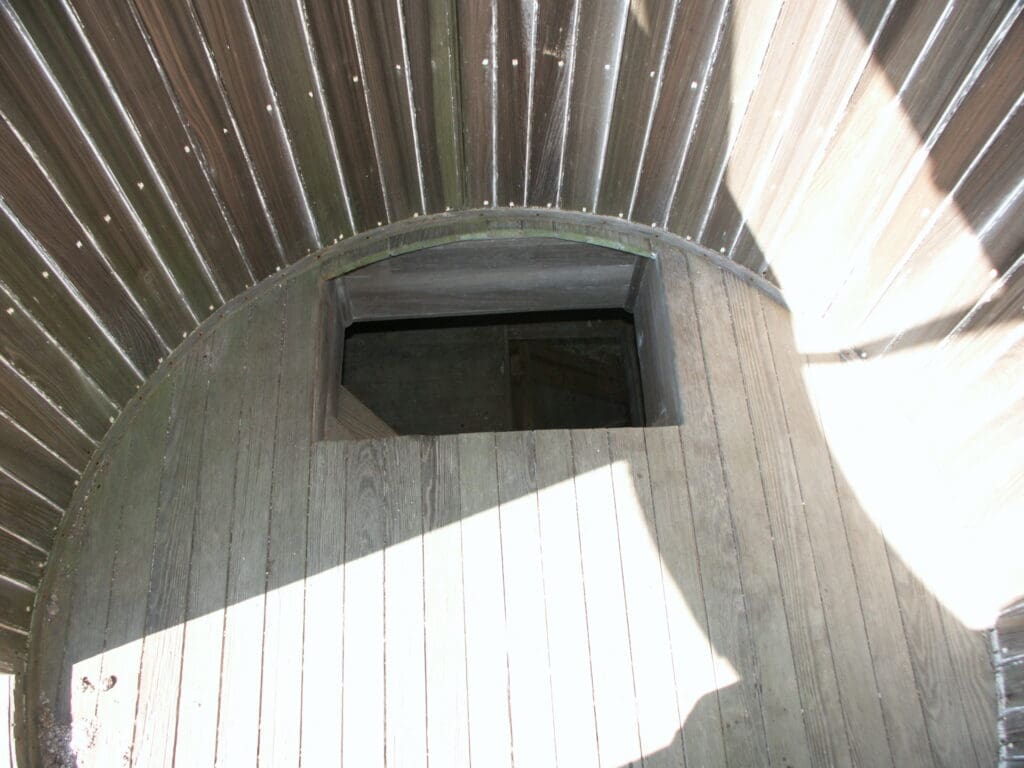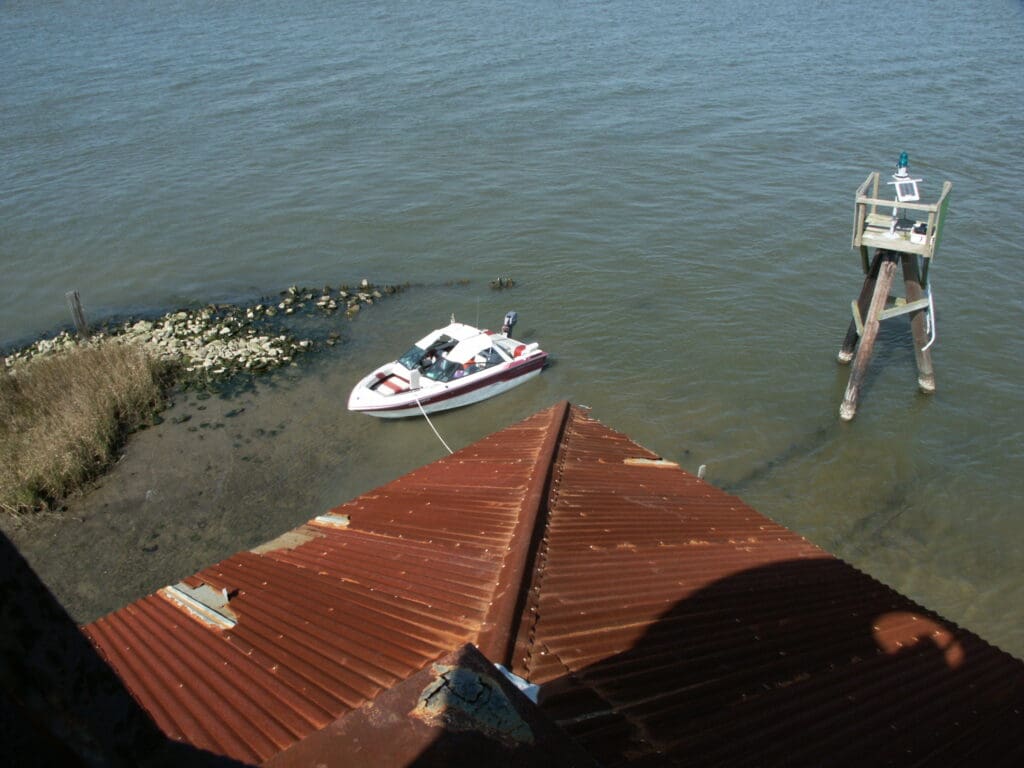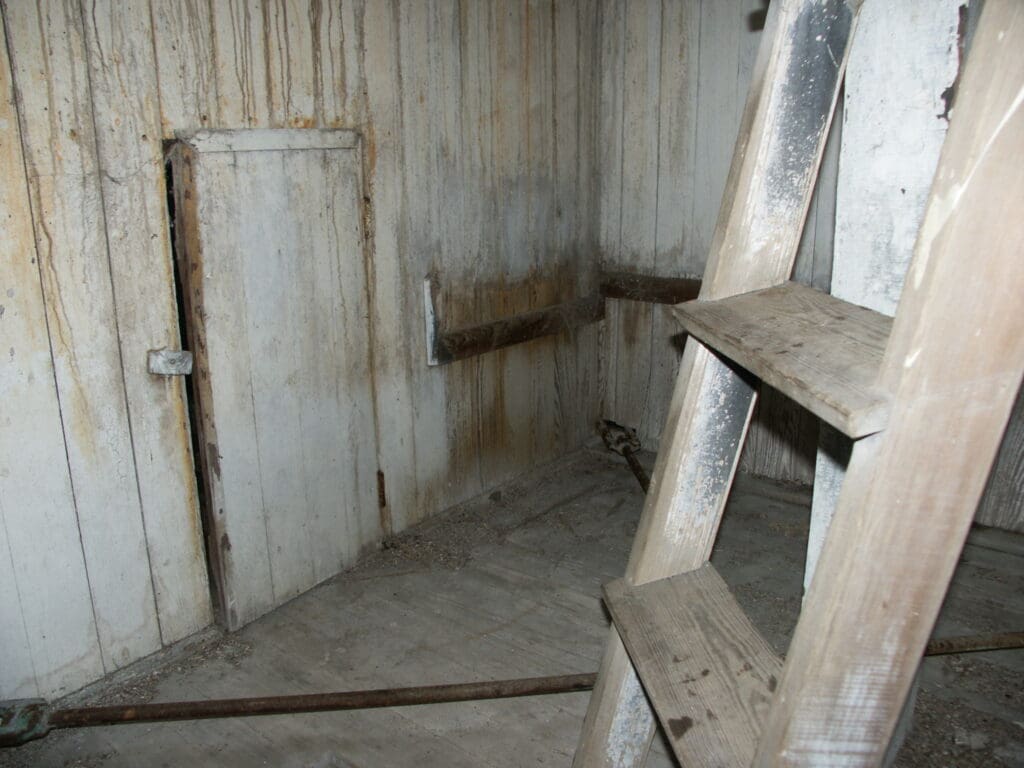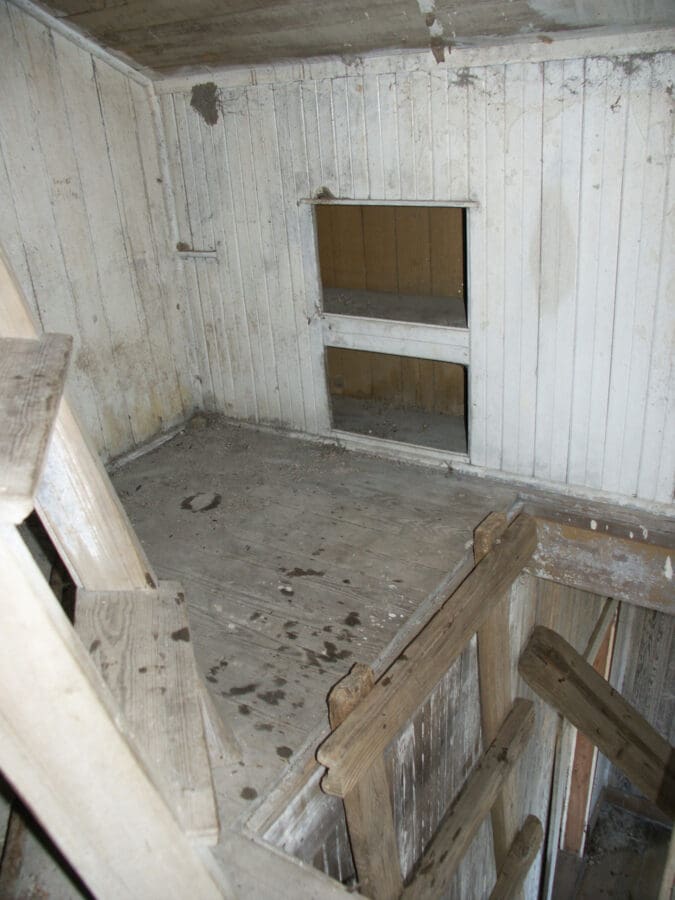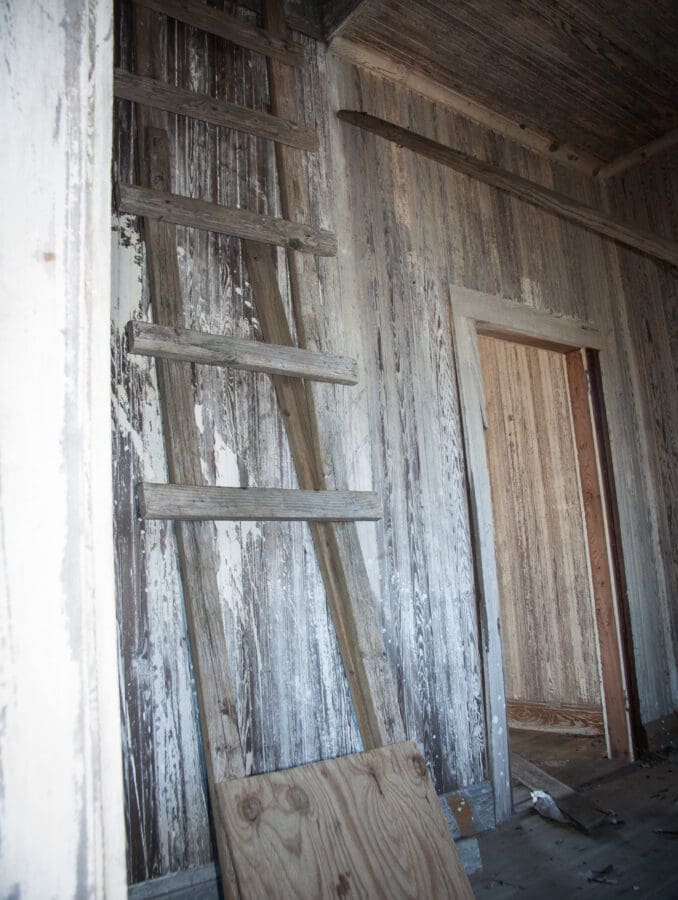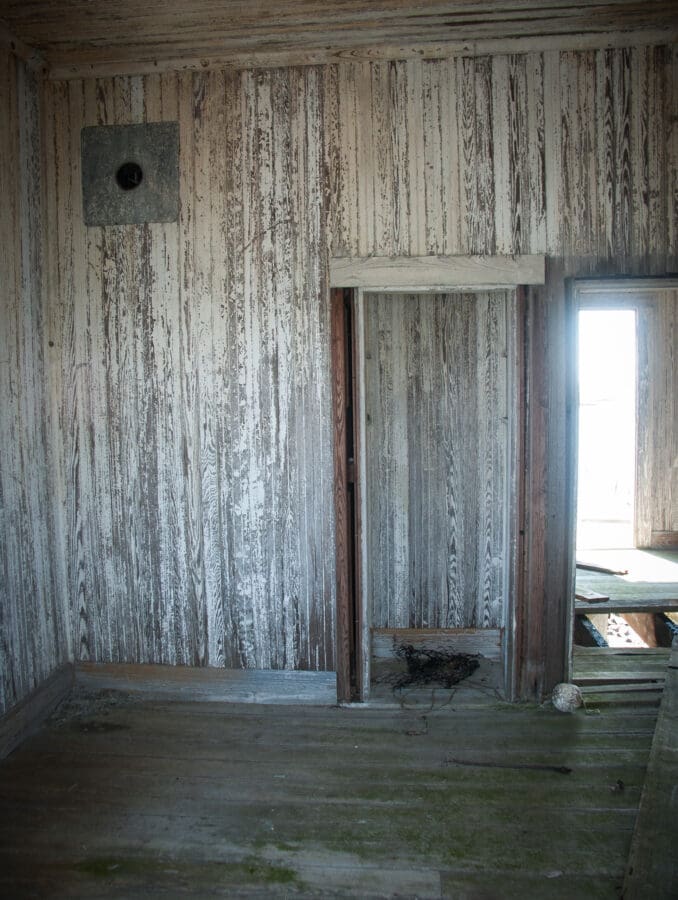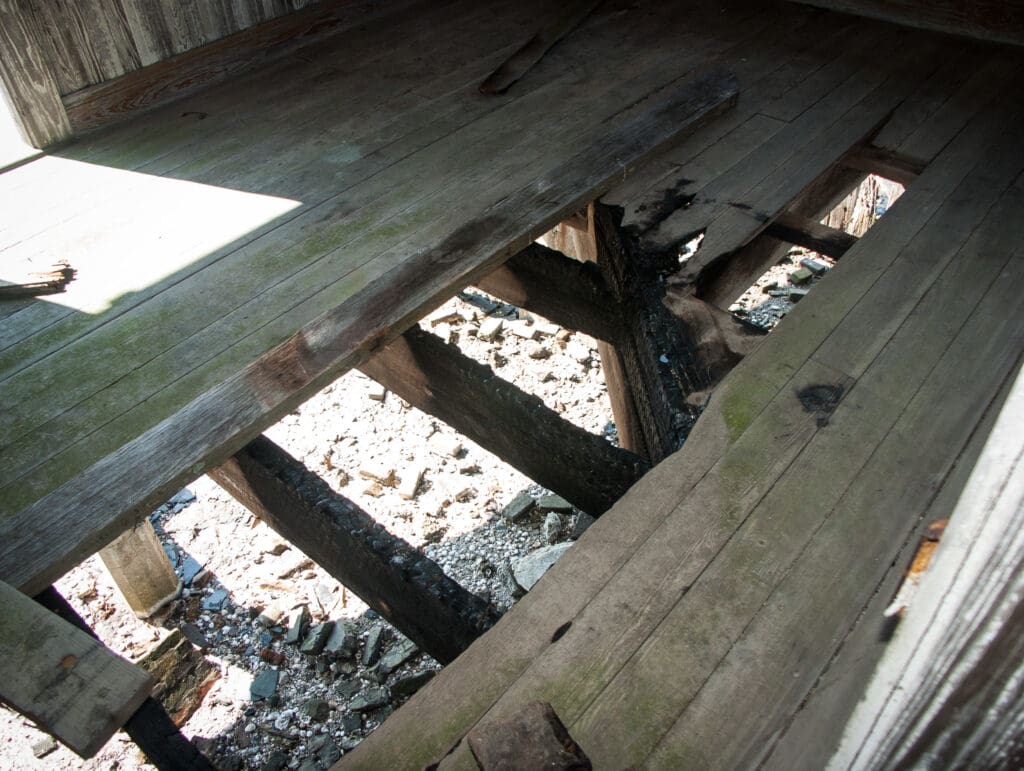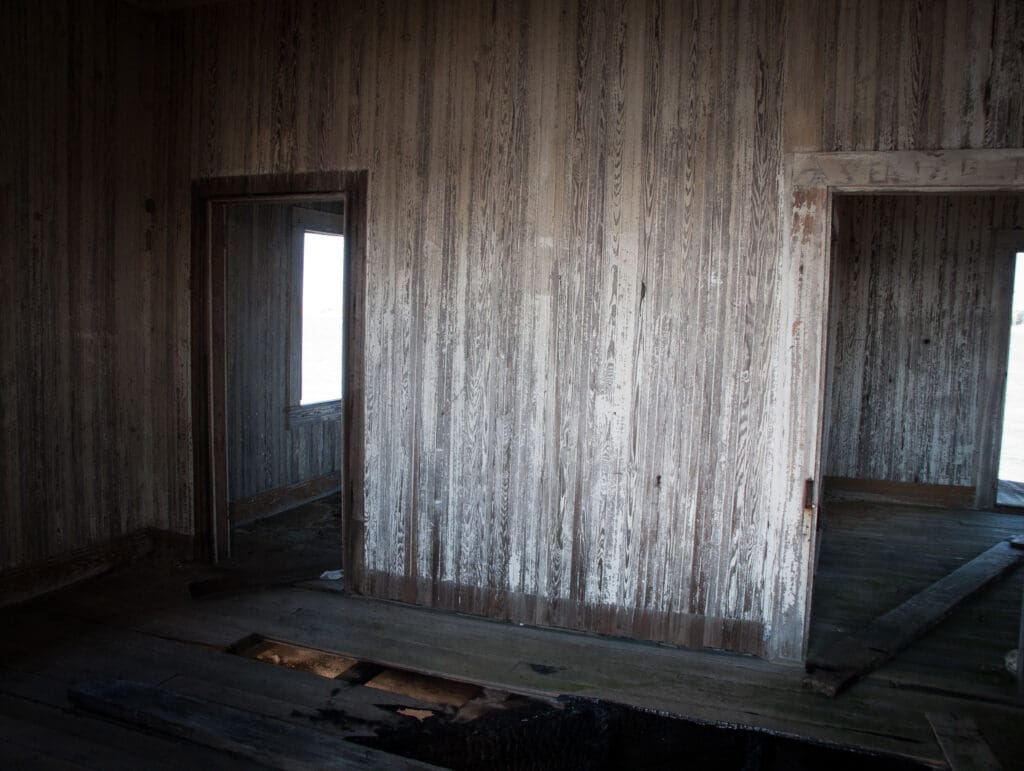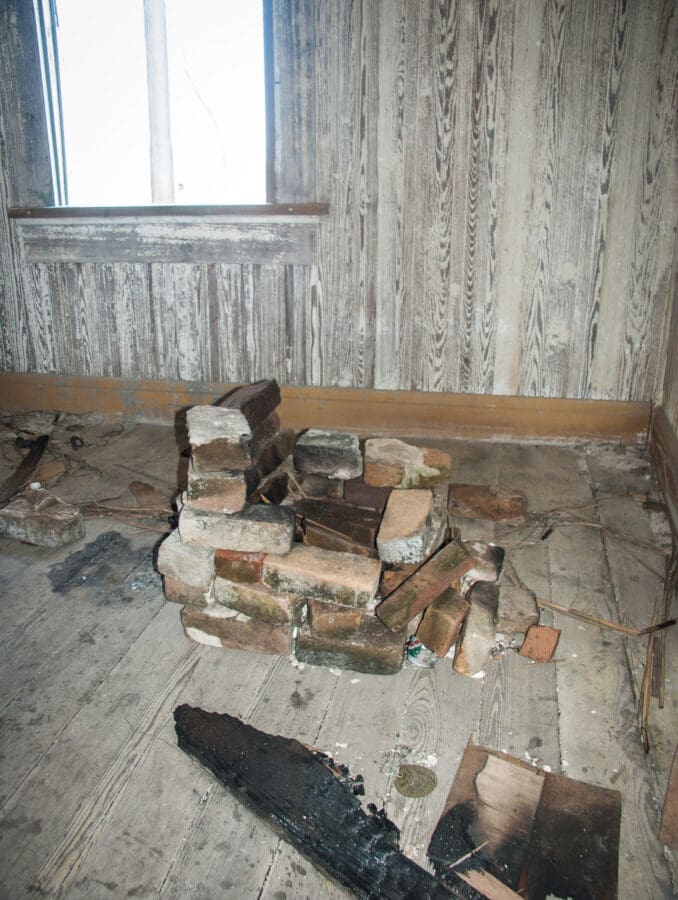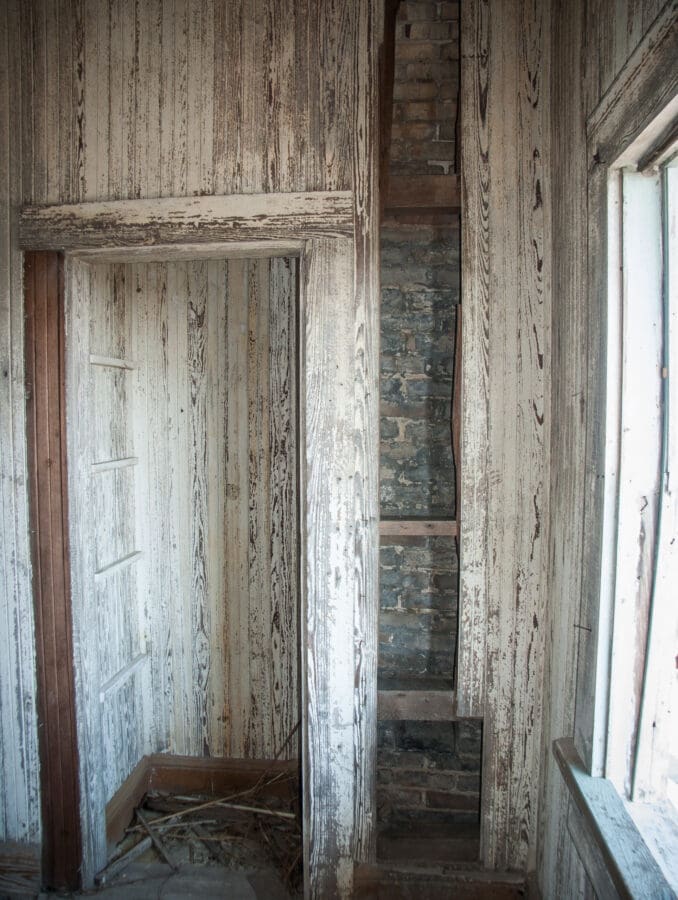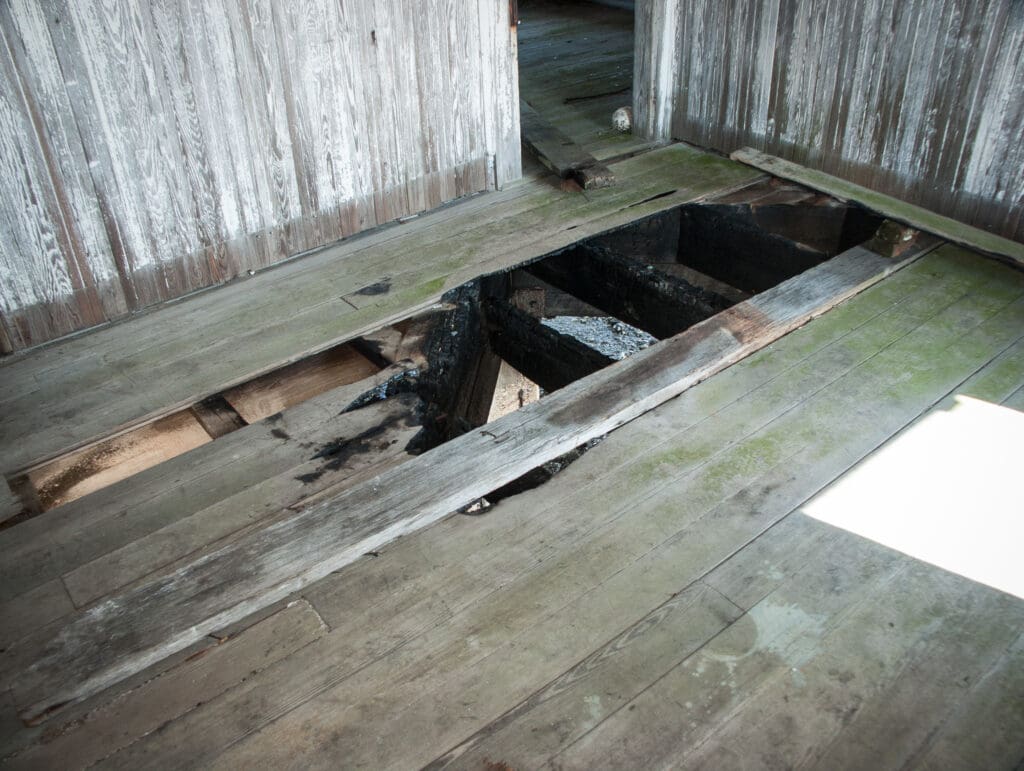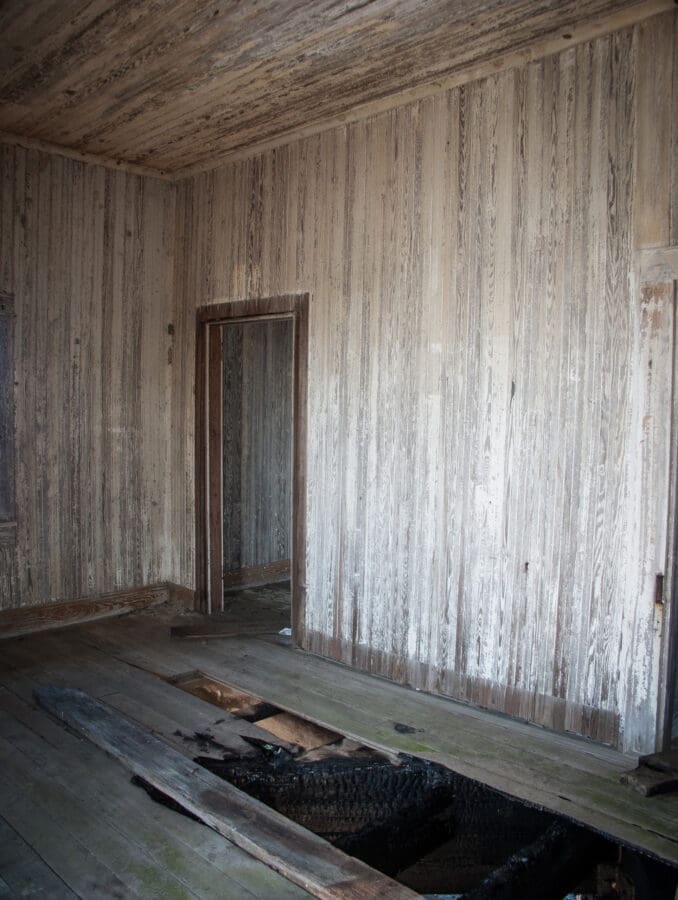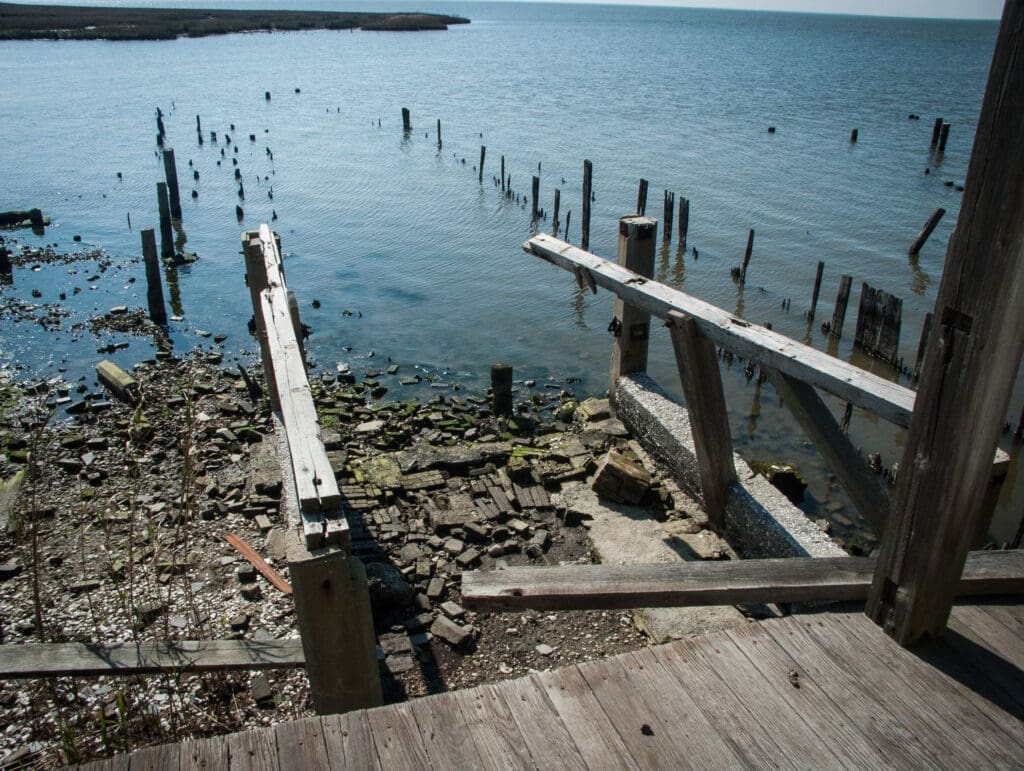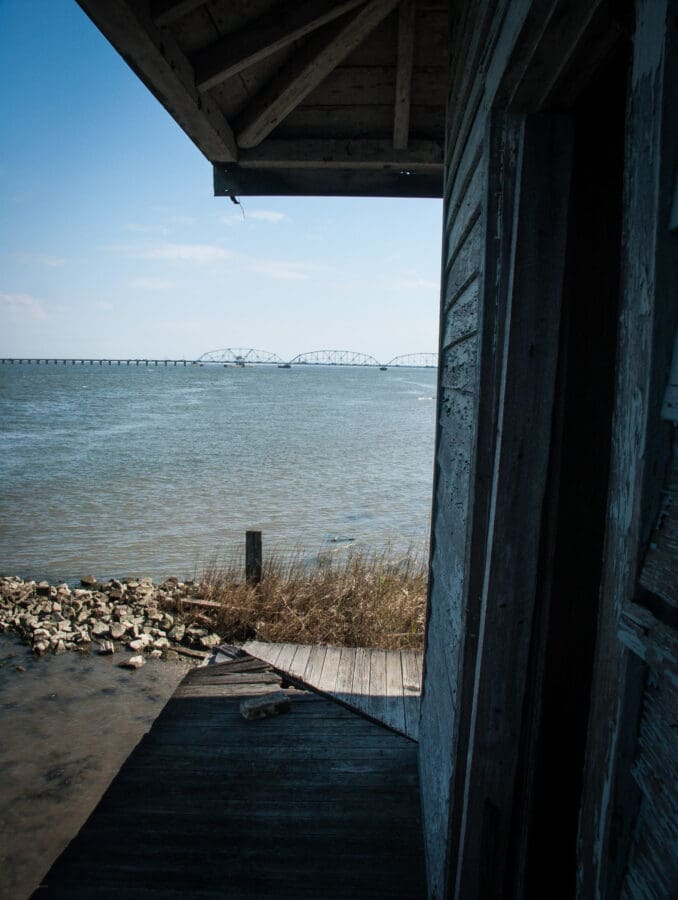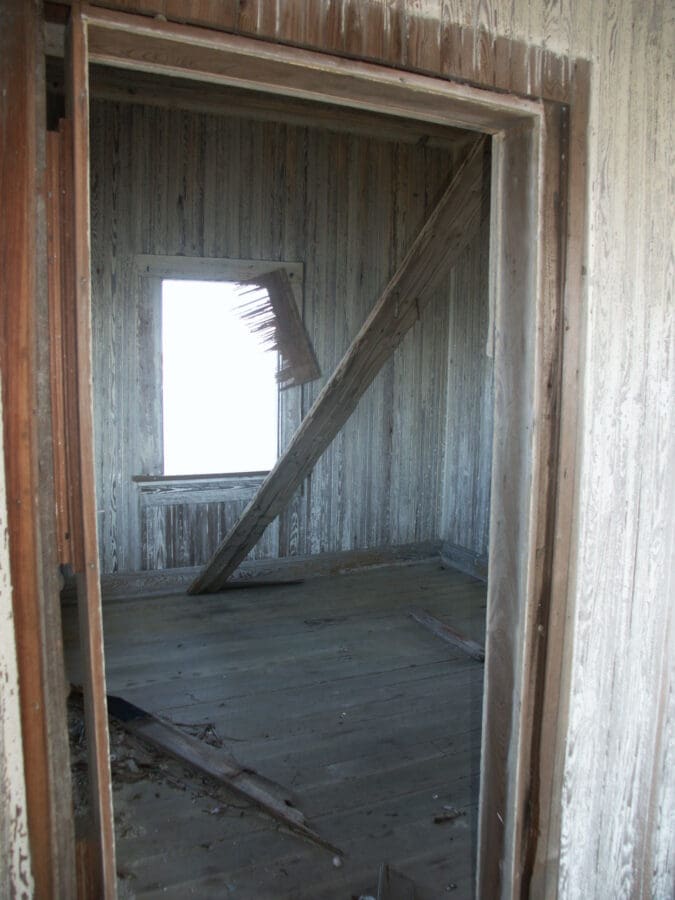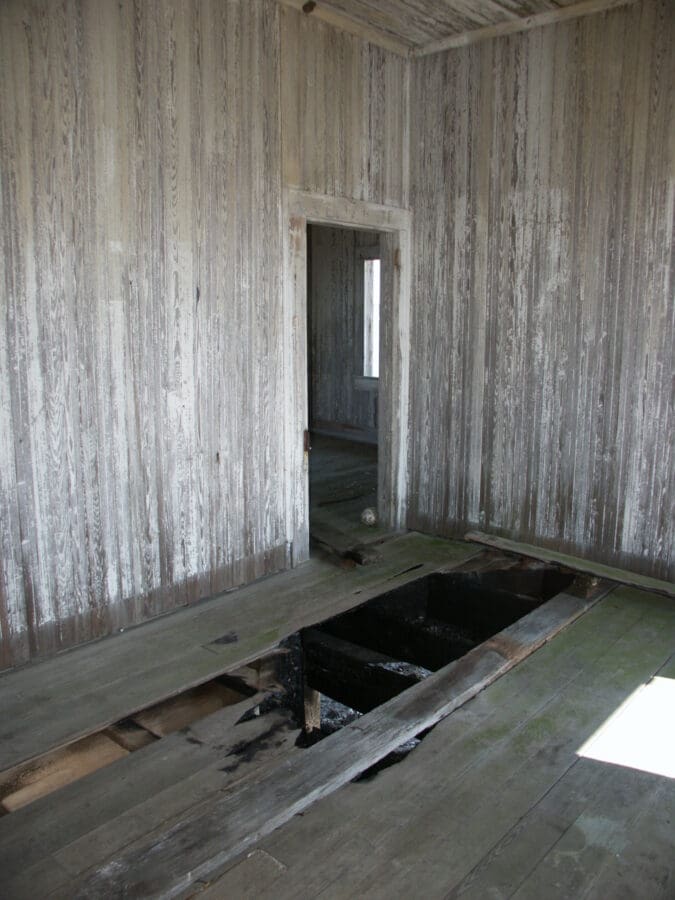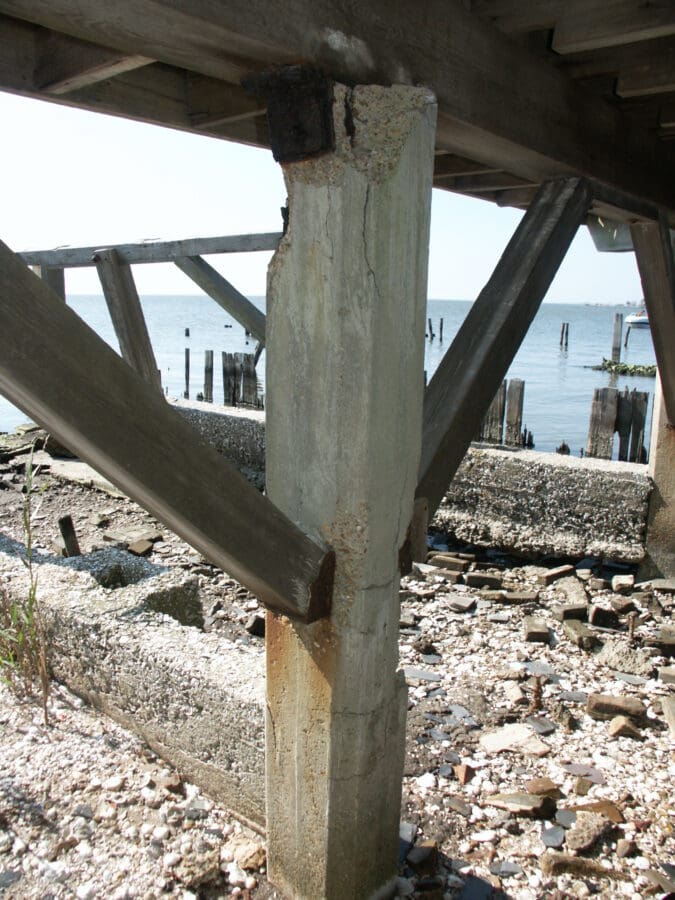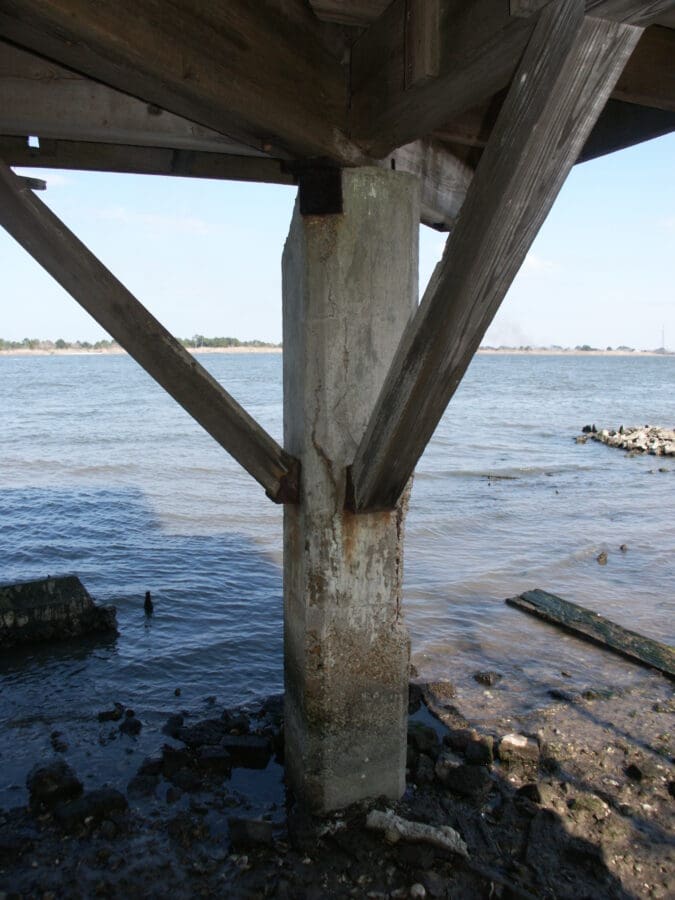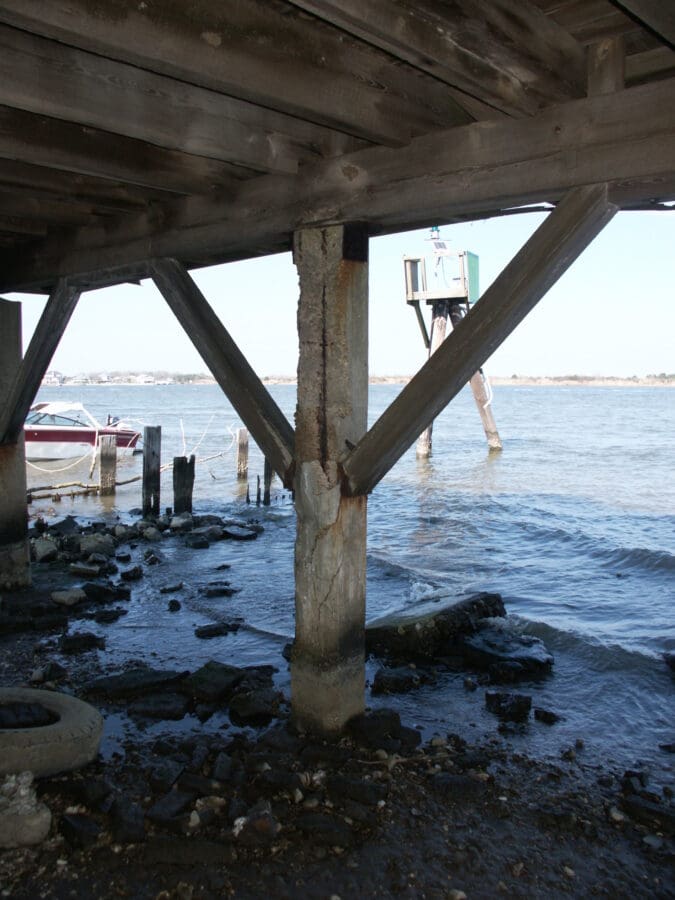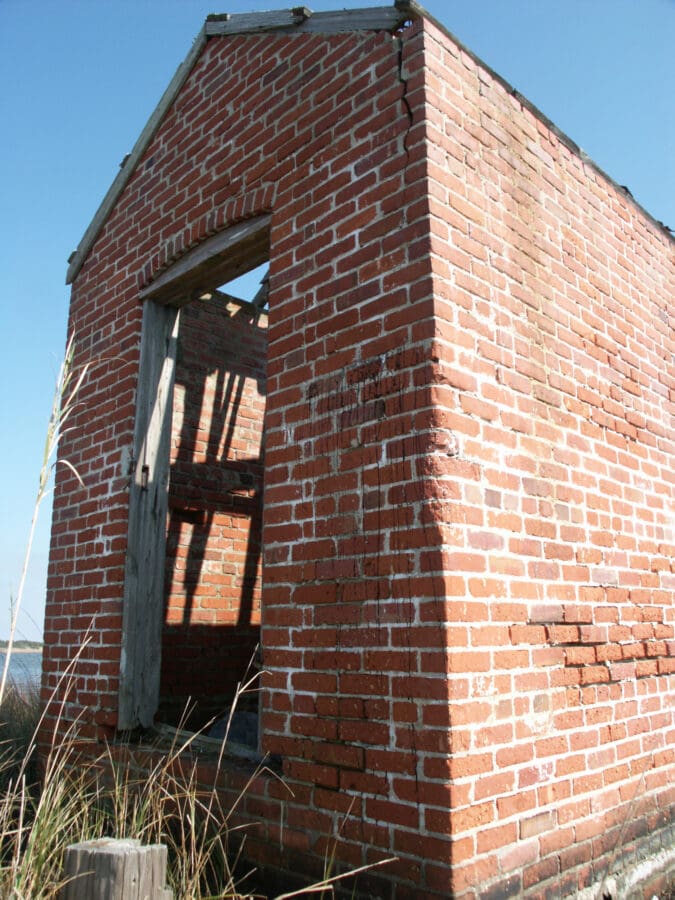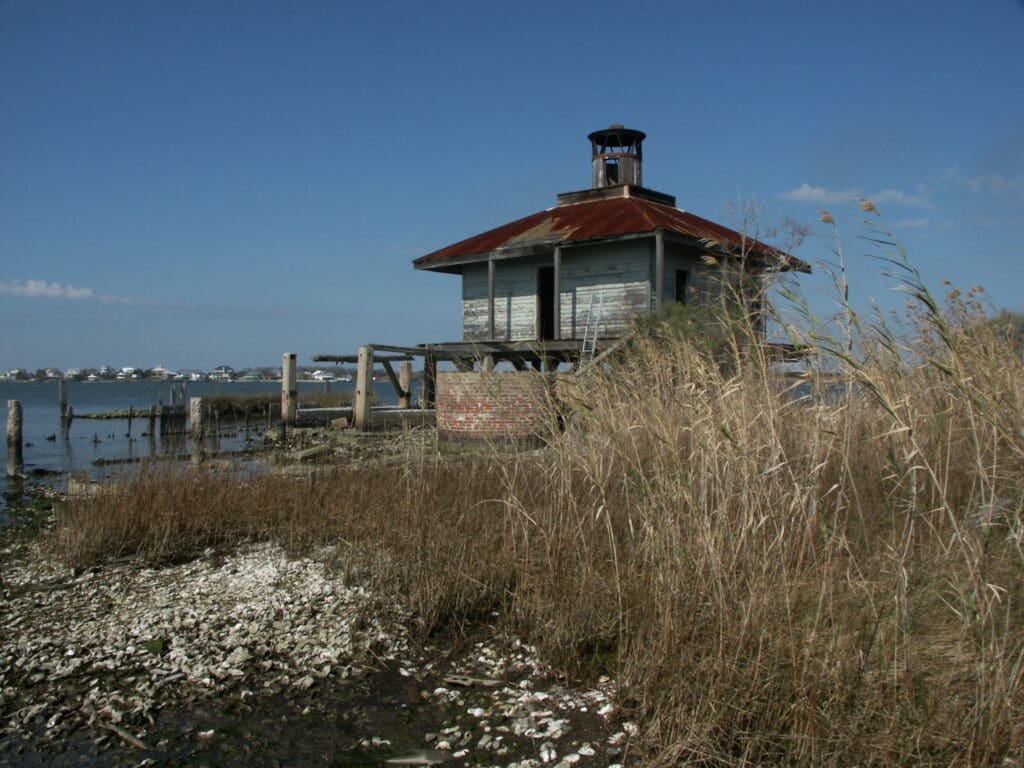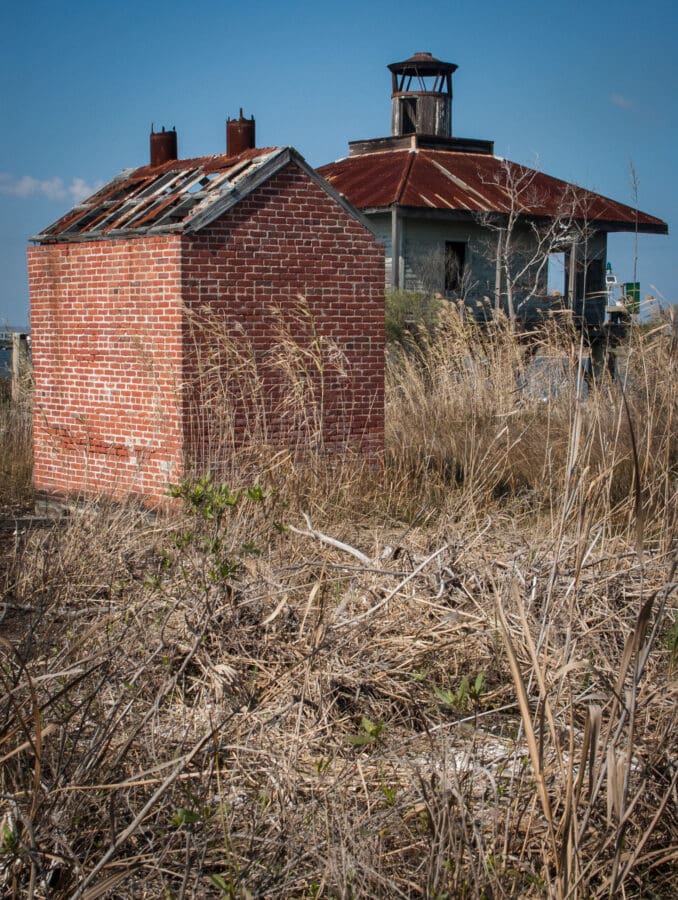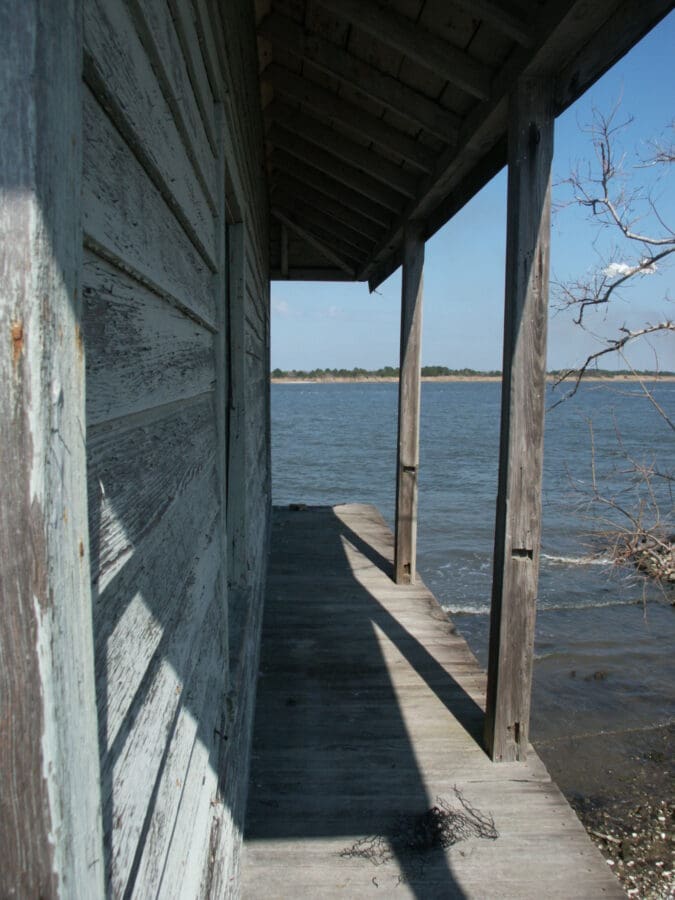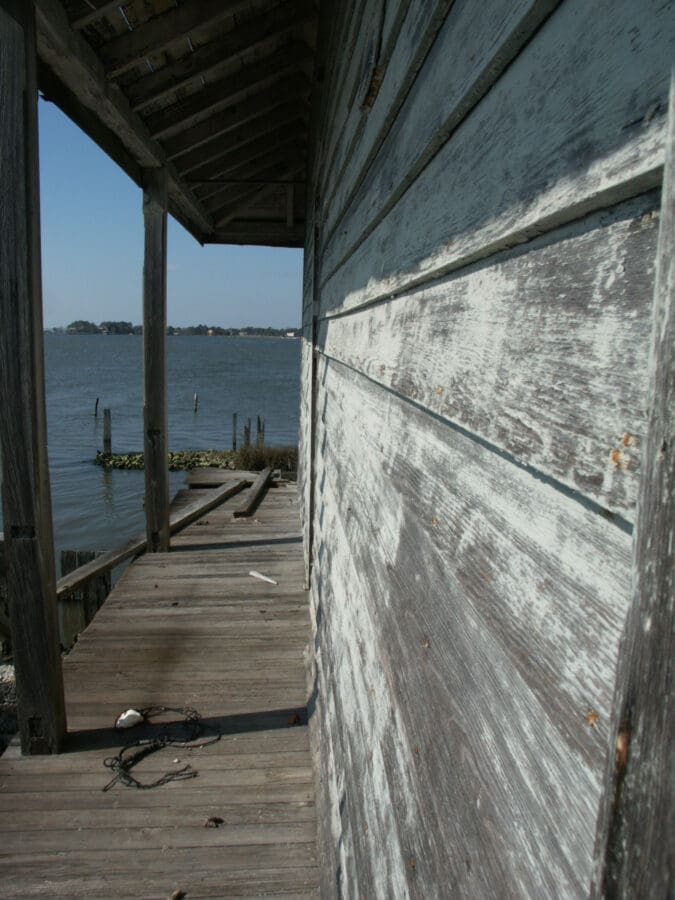West Rigolets Lighthouse
This personal gallery contains pictures of the West Rigolets Lighthouse, near New Orleans, Louisiana. The lighthouse was destroyed by Hurricane Katrina in 2005 (no trace of it remains), but several years prior to that, I had traveled out to the structure by boat and photographed not only the exterior, but the interior as well.
This page was stashed away in a back corner of my old website for many years, and having transitioned to a new type of gallery site that made it impossible to directly transfer that page to the new site, I was going to just forget about it, but then decided there might be some people out there who would enjoy seeing these photos, especially the shots of the inside of the structure, as I haven’t seen any other such images on the web.
The lighthouse was built in 1855, and has the distinction of being the only lighthouse whose keeper was killed during the Civil War. He was found shot to death after just his second night on the job. The lighthouse was deactivated in 1945, and was then sold as surplus to a private owner.
I observed on my visit that it appeared that some people had camped out in the building, and inexplicably decided to build a campfire on the wooden floor, almost causing this lighthouse to meet the same fate as the similar Point Aux Herbes station which was located several miles away on the south shore of the lake and sadly was burned down in the 1950’s by vandals. Also, the concrete pilings on which the structure rests appeared to be in poor condition, with many cracks readily apparent, and eroded concrete revealing parts of the reinforcing iron rebar.
A small brick building nearby was, I assume, where lamp oil was stored, or perhaps some other utilitarian purpose. Next to this building, pairs of wooden pilings receding off into the distance through the marsh were apparently the remains of a small bridge, which had allowed access by foot without requiring a boat at one time.
The round brick structures behind the lighthouse were bases for wooden cisterns to hold the station’s water supply. Also behind the lighthouse were some pilings that I initially assumed were the remains of some kind of dock, but later learned that they had actually supported a kitchen that had been added on at some point after the initial construction (but had since disappeared by the time of my visit).
The square-shaped building was divided into four roughly equal rooms, one of which had a makeshift ladder up to the next level, which was a space directly below the small round portion at the very top, where the lamp would have been housed. I was later told that this small square shaped room is where the keeper would usually stay during the night, as it provided shelter from the elements while still allowing him to perform his duties of monitoring and tending to the light. This also appeared to be a storage area, with some cubbyholes and a little door that opened, revealing attic space.
Here’s a rough approximation of what the floorplan of the main floor looked like:
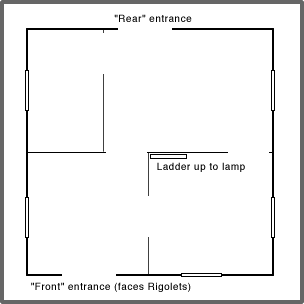
© 2025 MICHAEL CASWELL. ALL RIGHTS RESERVED. Privacy Policy
RETURN TO TOP
@michael.caswell
Follow along on Insta
Photographing weddings in New Orleans, Baton Rouge, Lafayette, and the Mississippi Gulf Coast.



